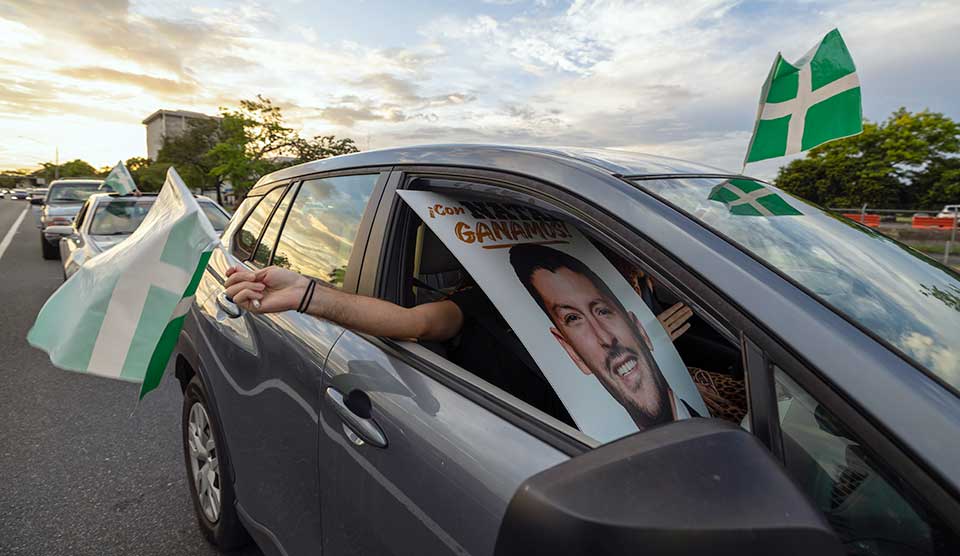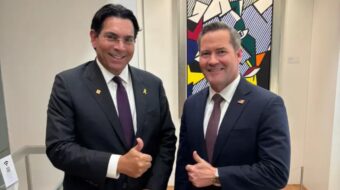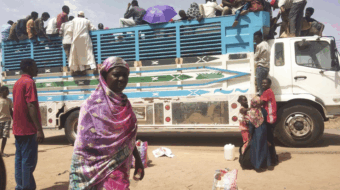
November 5 was also Election Day in Puerto Rico, and the special significance of the vote taking place was evident beforehand. A commentator detected from opinion polls that, “This election already is historic. It already marks a before and an after.”
For the first time ever, a gubernatorial candidate of the Puerto Rican Independence Party (PIP) was successfully challenging the candidates of the pro-statehood New Progressive Party (PNP) and the pro-commonwealth Popular Democratic Party (PPD). The two parties have ruled the roost in Puerto Rico for decades.
As of November 6, with 91 precincts having reported, PNP candidate Jenniffer González was leading with 39% of the votes. Juan Dalmau, the PIP candidate for governor, had gained 33%, and PPD candidate Jesús Manuel Ortiz only 21%. Conservative candidate Javier Jiménez of Project Dignity obtained 7% of the vote.
Preliminary results of voting for the resident commissioner show the PPD candidate with 44.4% of the vote, followed by 35.7% for the PNP candidate and 9.5% for Ana Irma Rivera Lassén of the MVC. The resident commissioner is Puerto Rico’s sole member of the U.S. Congress but has no authority to vote on legislation.
The results of past voting for governor show a trend. Candidates of the PNP and PPD parties together shared 95% of the vote in 2012, 81% in 2016, and 65% in 2020. “These political parties have basically collapsed over the past ten years,” says Rafael Bernabe, gubernatorial candidate for the Working People’s Party in 2012 and 2016.
The PIP, by contrast, has gradually broadened its appeal. Its candidates for governor moved from 2.5% of the vote in 2012 to 2.1% in 2016, and up to 13.5% in 2020. That party is heir to a legacy of serious U.S. repression from police and the FBI directed at both the PIP and the former Nationalist Party.
The improved electoral showing of the PIP is due mainly to a creative workaround of the U.S. government’s prohibition of coalitions being utilized in Puerto Rican elections. By late 2023, the PIP and the Citizens’ Victory Movement (MVC) had joined an alliance called the Country’s Alliance (Alianza de País).
The two parties created an arrangement whereby each partner would put forth its own candidate for all offices being contested, including the governor and resident commissioner. The stipulation was that only one of the two candidates for each office was actually seeking votes. The other does not do so and has no intention of serving in office.
For example, PIP candidate for governor Juan Dalmau received votes from MCV backers who did not vote for the MCV candidate. Likewise, Ana Irma Rivera Lassén, the MCV candidate for resident commissioner (and general coordinator of the MVC) gained PIP votes for her candidacy and none from her own party.
The MVC, formed in 2019 and joined by the Working People’s Party and the Hostosian National Independence Movement, claims in its party program an “Urgent Agenda … [dealing with] the rescue of public institutions; social, environmental, and economic reconstruction, and decolonization of Puerto Rico.”
The MVC, whose candidate for governor in 2020 took 14% of the vote, proposes reforms addressing a wide range of social problems and relief of class and identity-based oppression. Its program emphasizes the importance of competence, efficiency, and freedom from U.S. interference in achieving these gains.
The PIP, founded in 1946, has long advanced Puerto Rico’s struggle for national sovereignty while also pushing for social reforms. The two parties are as one in fighting the corruption that they say permeates the PNP and PDR alike.
The PIP and MVC are each seeking a “constitutional assembly on status.” As described by Rafael Bernabe, the delegates to such an assembly would study, debate, and decide on future relations with the United States. The options would be independence, statehood, or commonwealth. The U.S. government characterizes the latter as “free association.” It represents the status quo. Bernabe insists that “the process of self-determination…should start with us.”
Any political change on the way now in Puerto Rico is responding to a step-wise process that led to disaster. The downhill course began with the U.S. government in the 1990s having withdrawn tax incentives aimed at stimulating new industry. Businesses and factories disappeared; income from taxation decreased and so too much of the government’s social programming. Public borrowing spiked to replace the lost income. The accumulated debt became unpayable.
In 2016, the U.S. federal government created its Financial Oversight and Management Board in order to deliver austerity and privatization to the island’s economy. Public expenditure for human needs was put on a short leash. Grief multiplied, and more so with the ravages of Hurricane Maria in 2017. The newly privatized electrical generation system has never fully recovered.
A recent New York Times report describes an island in “ruins,” specifically with “[s]huttered schools, crumbling roads, a university gutted by budget cuts, a collapsing health system, and relentless blackouts.”
This report concludes with a commentary from analyst Jenaro Abraham, taken from NACLA.org:
“As the naked interests of U.S. imperialism have become more evident, the conditions for political unity were forged…. [The Alianza] is the product of the experiences anti-colonial movements have long endured under the brunt of U.S. imperialism…. [They have] compelled the PIP and the MVC to partake in a shared strategy that places…differences aside in service of a more immediate shared goal: uprooting the bipartisan pro-colonial stranglehold over Puerto Rico’s government.”










